Integrated Pest Management for Hemlock Woolly Adelgid
How to Combine Chemical and Biological HWA Treatment Strategies for Hemlocks
The application of Integrated Pest Management (IPM) policies for Hemlock Woolly Adelgid (HWA), using both chemical and biological HWA control agents, is already underway on many Federal lands in the eastern US. This IPM approach uses limited chemical treatments to provide short-term (3-5 year) protection to selected larger hemlocks, while releasing HWA predator beetles on all other (untreated) hemlocks. This biological component is critical to provide long-term HWA control and support the recovery of hemlock ecosystems.
Sometimes this dual IPM strategy is motivated by economic considerations – the fiscal challenge of chemically treating all HWA-susceptible hemlocks in a wild hemlock woodland even once, much less making repeated applications over decades. Sometimes a dual IPM strategy is motivated by biological considerations, recognizing that the survival of hemlock ecosystems requires protection of all hemlocks, including the smaller saplings and seedlings that will replenish current hemlock populations.
The good news is that there is growing evidence that this dual chemical/biological IPM strategy can be successful in achieving the objective of long-term protection of hemlock areas (not just individual trees) from the damaging effects caused by HWA infestation.
Recent evidence for wild hemlock areas is provided by National Park Service observers at 8+ year IPM application sites in Great Smoky Mountains National Park (GSMNP), where hemlock ecosystem recovery is noted at multiple predator beetle release sites. (See Report) Evidence for residential IPM efficacy comes from numerous 8 year IPM application sites in Brevard, NC. There city, county and private participation in both chemical and biological applications in 2007-8 has created residential IPM areas where hemlocks are alive and growing well in the presence of continuing light HWA infestations (which are maintained by the established Sasi/St predator beetle population).
Sasajiscymnus tsugae predator beetles attacking Hemlock Woolly Adelgid
These positive results clearly establish that it is not the presence of the HWA organism, but the high population density of HWA infestations that is the threat to the survival of our native hemlocks. Because the HWA that were imported into the eastern US will never be eliminated, the fact that our native hemlocks can survive and grow under the lighter HWA densities that are maintained by Sasajiscymnus tsugae predator beetle populations is of critical policy importance for private landowners! For more on the biological control of HWA, go to Biocontrol.
Of course there have also been failures of USDA IPM efforts for HWA – for example numerous old growth USFS hemlock areas throughout the Southern Appalachians (including at Joyce Kilmer and Linville Gorge) have been destroyed, despite receiving both chemical and biological control applications. The critical variables here involve the massive infestation levels of advancing HWA, the susceptibility of large hemlocks to sudden foliage loss and subsequent hemlock borer attacks, and the failure to get fast-acting chemical insecticides deployed in time. But despite the initial devastation of old growth hemlocks, all the hemlock areas that received biological as well as chemical treatments should experience longer term restoration and recovery of hemlock ecosystems beginning with hemlock seedlings, saplings and any smaller trees that survive the initial HWA “avalanche”.
USDA-Recommended IPM Strategy for Hemlock Woolly Adelgid
Toward Integrated Pest Management of HWA
“It has recently been proposed that the integration of chemical and biological control on an area-wide scale may help save some hemlocks that otherwise would not survive in the long-term by any one control method used alone. The concept currently being tested involves the chemical treatment of a subset of mature infested hemlock while releasing predators on understory trees. The chemical treatment could provide short-term protection for the larger trees and allow the predator populations to build up in the understory. Once the larger trees lose their chemical protection, an established predator population might be more capable of controlling a building HWA population than a predator population still on the process of becoming established. These kinds of integrated approaches should continue to be evaluated while new management tools are developed for HWA control. “
Source: https://www.fs.fed.us/foresthealth/technology/pdfs/HWA-FHTET-2014-05.pdf
IPM in Action
Camp Glen Arden in Tuxedo NC provides an excellent example of what can be achieved by a well-timed IPM application to protect hemlocks from HWA. This Camp responded to the first indicators of HWA infestation by making ground applications of imidacloprid to their larger hemlocks in 2006 & 2007. Then they responded to HWA infestations in smaller hemlocks with Sasi/St beetle releases in 2007, 2008 & 2010. As of 2014, there have been no HWA-related hemlock losses on camp property, and hemlocks on adjoining properties are beginning to recover as well.
Here are some of the larger hemlocks at Camp Glen Arden, 8 years after the onset of HWA infestation .
And the smaller hemlocks, which were used to grow the predator beetle population, are also doing well: creekside, roadside, and along walkways
The success of any IPM intervention to protect hemlocks from HWA will always depend on timing. The key is to restrict chemical treatments to the largest hemlocks, before they have experienced too much foliage damage. And predator beetle applications should be directed to those untreated hemlock areas where there is sufficient HWA present to support rapid population growth for the beetles.
HWA Integrated Pest Management Planning for Private Landowners
Many private landowners who are familiar with the threat of Hemlock Wooly Adelgid will have already used either systemic chemicals or oil/soap sprays to provide short-term protection for their hemlocks. But for longer term protection, a biocontrol component using predator beetles is required.
Those who are first experiencing the HWA onslaught should consider a dual strategy that uses either systemic or topical chemical applications to provide short-term protection to the largest hemlocks (which are most vulnerable to HWA damage), while releasing predator beetles on smaller hemlocks to establish biological control. And finally those who have relatively light HWA infestations or areas with smaller size hemlocks (<20”dbh) can forgo the short-term chemicals and rely purely on biological control.
There are some important tactical issues to consider when combining predator beetles with chemical applications. Any beetle that feeds on HWA that have been poisoned by a pesticide application will also die. And it doesn’t make sense to buy beetles and then poison them! On the other hand, systemic chemical applications have a relatively short “kill window” (at least for HWA). So timing of chemical and biological treatments can be critical.
New IPM chemical applications to selected hemlocks should utilize the faster acting dinoterfuran (Safari), and either direct beetle releases away from chemical treatment sites or delay releases until poisoned HWA are gone from the trees (4 months or more depending on chemical and application method). Older chemical applications of imidacloprid should not be a threat to predator beetles, once the HWA are gone. But if you release beetles on hemlocks after chemical treatment, there won’t be any food for them. Remember, that once you have predator beetles present, HWA ovisacs become a valuable resource for beetle feeding and reproduction. Healthy HWA are essential to growing your predator beetle population! If you poison them, you will also poison your predatorss!

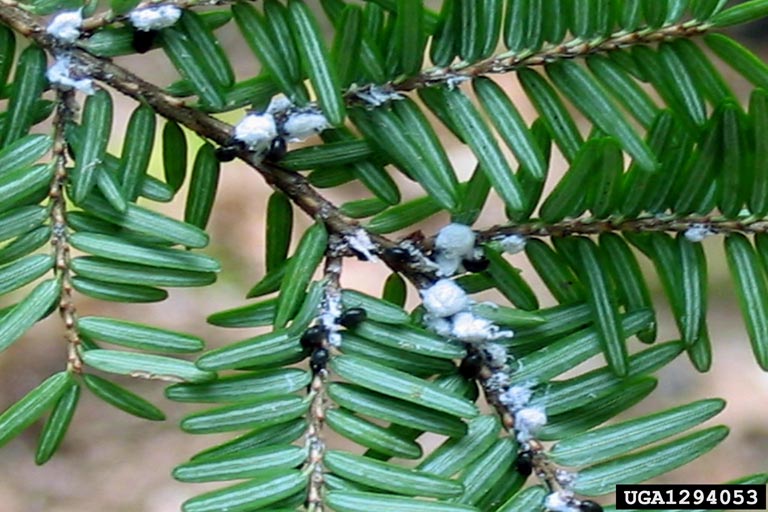
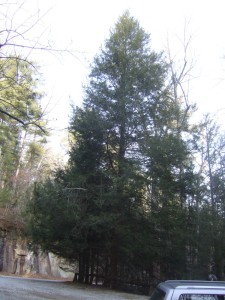
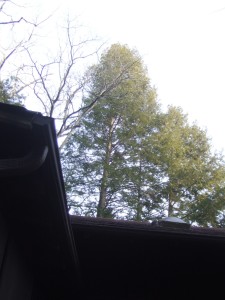
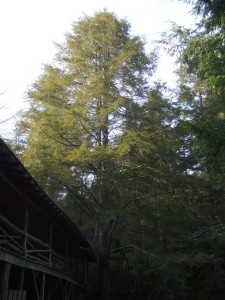

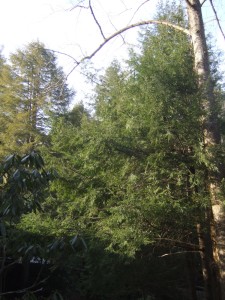
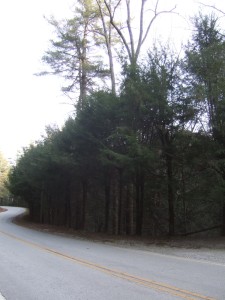
Leave a Reply